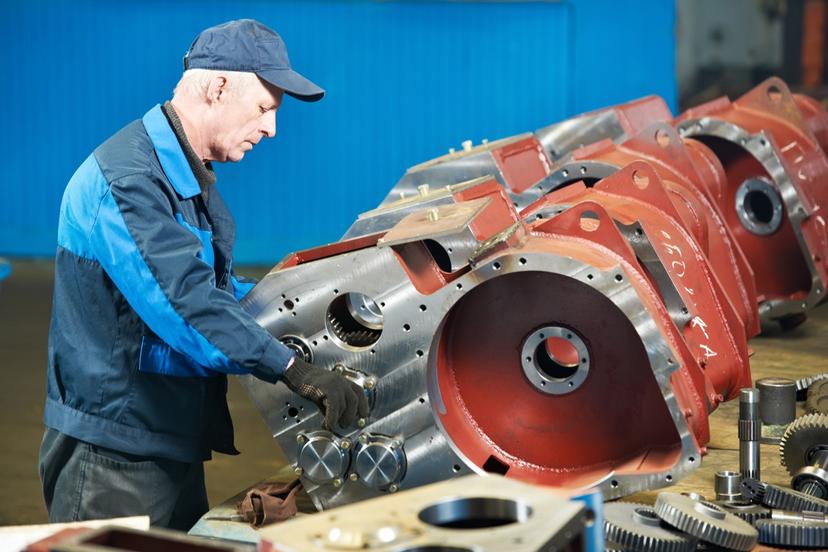Manufacturing

Background
From ancient Greek clay pots to Roman bronze weapons and building materials, humans have demonstrated the need to produce goods. By the Renaissance, Europeans were manufacturing gunpowder, clothing, and other goods for trade with people in faraway lands and across the oceans. They built factories where goods were produced by hand with simple tools or with water-powered machines.
Several major inventions fueled the Industrial Revolution, which began around 1750 and employed the many workers necessary for mass-production processes. Mass production meant that many more goods could be produced at a time. The steam engine was engineered as the new power source for machinery, further increasing the rate of production.
Soon the assembly line was introduced to the manufacturing process. The assembly line allowed products to be sent from station to station to be made in stages, with each worker contributing work to a product's completion. Henry Ford and his colleagues contributed the conveyor belt to the world of manufacturing early in the 20th century. This device tripled the speed of production with its ability to drive the assembly line.
Today, computer technology plays a significant role in the manufacturing process. Computers are important in assembling products, testing their effectiveness, and tracking production rates. While computers have made the process much more efficient since the days of steam engines, automation has also eliminated the need for many jobs. Computer-programmed robotic machinery now performs many of the duties people once handled. Robotics and other computer technology will continue to be at the forefront of manufacturing in the future.
Manufacturing in the United States declined rapidly in the last half of the 20th century and has declined further in the first years of the 21st century. In the 1960s, almost 30 percent of all workers were employed in manufacturing, but that number dropped to less than 16 percent by the mid-1990s. Further steep declines in manufacturing have occurred in recent years. By 2004, manufacturing jobs had declined by 5.2 million from their peak in 1979. The decline continued during the recession that began in late December 2007, with 1.5 million additional manufacturing jobs lost from 2007 through 2009. Despite signs of improvement, according to the National Association of Manufacturers (NAM), just 8.4 percent of the U.S. workforce was employed directly in manufacturing in 2018, well below where it once was.
There are many reasons for the decline in manufacturing. There is more consumer demand for and more money spent on service industries than manufactured goods. Technological advancements are more easily adapted to manufacturing processes, allowing increased productivity with fewer workers. More companies have moved factories overseas where labor is less expensive. And small manufacturers have been squeezed out of business by their inability to compete with large firms that can afford the latest technology and can expand operations to all parts of the world.
